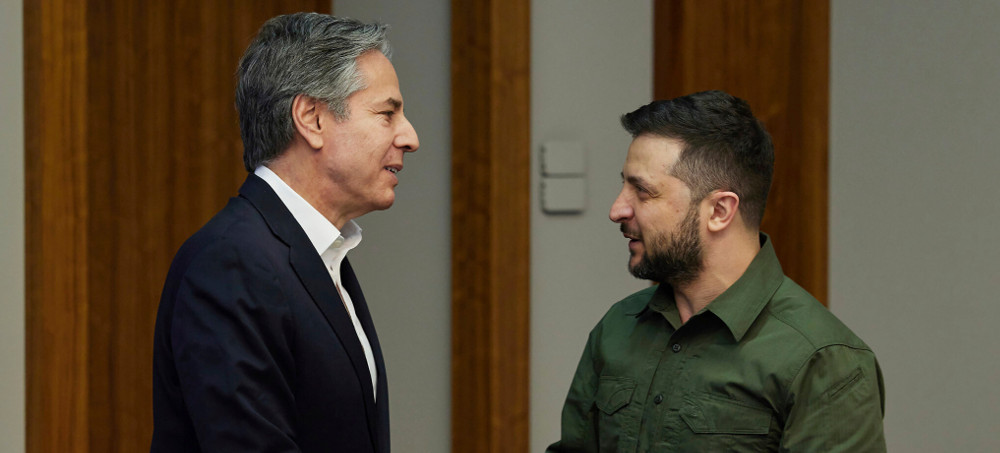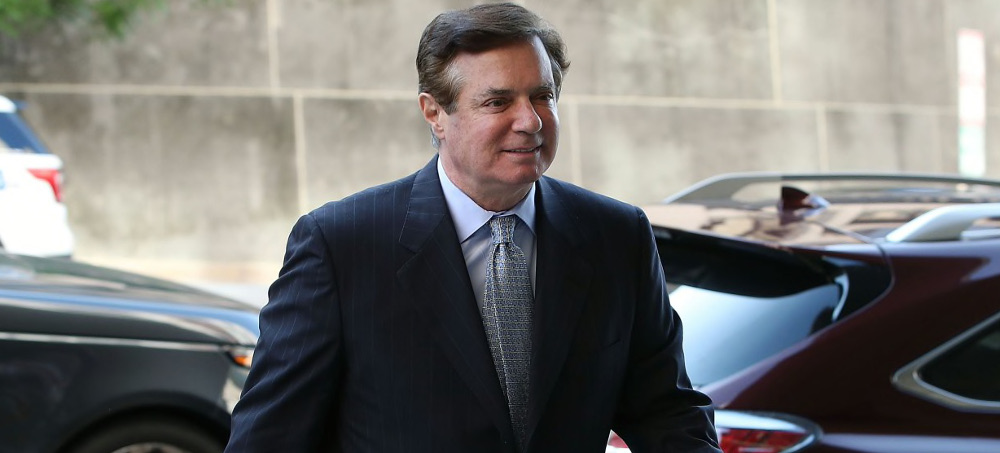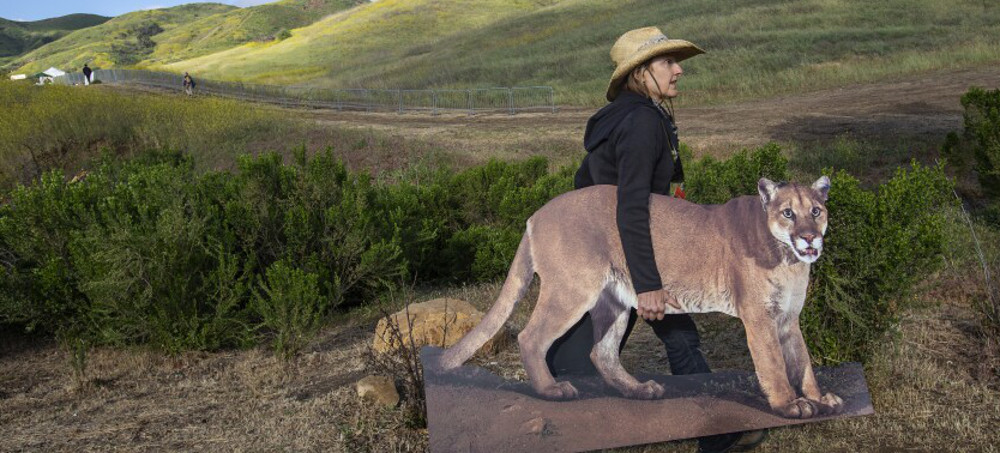Live on the homepage now!
Reader Supported News
She said, “What it is, is Satan’s controlling the church. The church is not doing its job, and it’s not adhering to the teachings of Christ, and it’s not adhering to what the word of God says we’re supposed to do and how we’re supposed to live.”
In many ways the success of the contemporary Republican Party depends on an Evangelical-Catholic political alliance against abortion rights and the sexual revolution. Evangelicals in Congress have been willing to vote six Catholics onto the Supreme Court for this reason. Greene’s vitriolic diatribe, however, raises the possibility that the QAnon white nationalists who are taking over the Republican Party are breaking with the Church over some of its social policies, which are often liberal or at least humanitarian.
She later said that foreign aid should be cut to countries from which refugees are fleeing to the US and that “If the bishops were reading the Bible and truly preaching the word of God to their flock and not covering up child sex abuse and pedophilia, loving one another would have the true meaning and not the perversion and the twisted lie that they’re making it to be.”
She had said that the Christian principle of “loving one another” should not involve surrendering to a “globalist agenda” to make “America become something that we are not supposed to be.”
I have thought about her diction here and I can’t make it mean anything other than “we Christian white people are supposed to love one another but that doesn’t mean we have to love brown or Black people, and certainly doesn’t mean we have to minister to non-white refugees. And if the Roman Catholic Church interprets Christianity as requiring charity to all, then it has itself become a tool of Satan.”
In other words, she views Christianity only through the lens of white nationalism.
But the (literal) demonization of Catholicism stands out in her remarks because it resonates with a long-term strand of Protestant white nationalism, as with the mid-19th century “Know-Nothing Movement,” a conspiratorial hate group that burned Catholic churches and attacked Catholic Americans.
Although Greene was brought up Catholic, she says she fell away from the church.
Being an army brat, I traveled around the world growing up, but in between postings we would spend time in Northern Virginia. I can’t remember now how it happened, but somebody once dragged me to a Baptist revival meeting when I was a kid and I was given a pamphlet about how the Pope was the antichrist and had 666 sewn into his mitre. Our branch of the Coles are fallen-away Catholics, but I remember being appalled. My generation had a positive impression of Pope John XXIII and the reforms of Vatican II. In fact, the latter helped inspire my BA thesis, the field work for which I conducted in Beirut, about the inter-religious dialogue it kicked off with Muslims.
The vicious anti-Roman Catholic sentiments expressed by Greene, as I said, evoke an ugly side of American history.
Three decades ago, historian Bryan Le Beau wrote in his address “Saving the West from the Pope”: Anti-Catholic Propaganda and the Settlement of the Mississippi River Valley,”
“Arthur M. Schlesinger, the elder, once told John Tracy Ellis, dean of the historians of American Catholicism, that he regarded prejudice against Roman Catholics to be “the deepest bias in the history of the American people.” By this, he did not intend to suggest that it was the most violent, though at times it certainly was; or that it was the most consistent, as it tended to wax and wane throughout American history; but rather, that the roots of anti-Catholicism lay buried in the depths of the American consciousness, bearing fruit over time across the American cultural landscape.”
On the East Coast from the 1820s forward, as German and Irish Catholics came to the country, the slogan of “no popery” was raised and riots were staged against the latter. In 1844 St. Michael’s Catholic Church in Philadelphia was burned and 20 people were killed. Between 1800 and 1840 a million Roman Catholics immigrated. (My paternal ancestor Georg Kohl [Anglicized as Cole] arrived in 1830, so he and his family would have known that atmosphere.) A Protestant riot greeted papal nuncio Archbishop Gaetano Bedini when he came to Cincinnati in 1853, Le Beau reminds us.
Catholic associations that had begun in Austria and France were attacked as threats to Republican liberties, since, it was alleged, the Church supported royal absolutism and opposed the idea of a Republic with the sort of individual rights adumbrated in the US constitution. Although it is true that the 19th-century Church profoundly disliked the French Revolution and its ideals, and much preferred monarchies that would back Catholicism, it isn’t the case that American Catholics were seditious. Some did object to Protestant hegemony, especially in public schools, and one man burned some King James Version Bibles, which made a bad impression.
It is ironic that in the 19th century Catholic Americans were attacked for being too conservative, and now Greene is attacking them for being too liberal. I pointed out some time ago that some right-wing Catholics make a big deal of their faith but completely ignore or even oppose the contemporary church’s social teachings.
The 19th century hate groups, however, did associate Catholics with immigration and saw a danger that they would convert the other immigrants, so that Nativist concern is common to our moment and the 1840s.
If Greene’s anti-Catholic sentiment becomes widespread in today’s GOP, it could be fatal to the party, since of the 72 million Catholic Americans, about half now vote Republican.
 In this image from video provided by the Ukrainian Presidential Press Office on Monday, April 25, 2022, Ukrainian President Volodymyr Zelensky, right, and U.S. Secretary of State Antony Blinken shake hands during their meeting in Kyiv, Ukraine. (photo: AP)
In this image from video provided by the Ukrainian Presidential Press Office on Monday, April 25, 2022, Ukrainian President Volodymyr Zelensky, right, and U.S. Secretary of State Antony Blinken shake hands during their meeting in Kyiv, Ukraine. (photo: AP)
 Tracy Gaeta was killed after a K-9 officer in Stockton fired more than 30 shots into her car Feb. 22. (photo: Getty)
Tracy Gaeta was killed after a K-9 officer in Stockton fired more than 30 shots into her car Feb. 22. (photo: Getty)
K-9 officer Kyle Ribera fired more than 30 shots into her car Feb. 22. The body camera footage of the incident was released April 7. The police department said the incident began when Gaeta was seen on surveillance striking a police SUV at a red light. She was pursued by Ribera, stopped at a dead end and backed into his car.
More on the incident from NBC News:
According to the body camera video, Ribera then fired 18 shots into Gaeta’s car.
Her vehicle’s reverse lights remained on, and Ribera fired several more shots. After changing his service weapon’s clip, Ribera yelled for the driver to raise their hands, according to the video.
Gaeta began driving, pulling forward several feet, then reversing away from Ribera. He opened fire again, shooting more than a dozen times, according to the video.
Gaeta was taken to a local hospital, where she was pronounced dead, the department said.
According to a policy adopted by the Stockton Police Department in 2019, officers are “generally” prohibited from firing at fleeing vehicles.
Gaeta’s family attorney Gary Gwilliam said the officer acted against the department policies on firing at moving vehicles. “No matter what was going on with her — even if she had committed a heinous crime — he didn’t have the right to shoot her. She never threatened him,” he said via NBC.
A spokesman from the Stockton Police Department told NBC News a review of the incident was underway which will end in a decision by the local district attorney’s office on whether to place criminal charges against Ribera.
Gaeta’s daughter, Tressie, called her a “loving, caring grandmother” in a statement from Gwilliam’s office. “I hope that we can find justice because she did not deserve to die like that,” she said.
 Former Trump campaign manager Paul Manafort arrives for a federal court hearing in Washington, D.C., May 23, 2018. (photo: Mark Wilson/Getty)
Former Trump campaign manager Paul Manafort arrives for a federal court hearing in Washington, D.C., May 23, 2018. (photo: Mark Wilson/Getty)
 Willard O'Neal hugs Tiffany Gobble, an investigator with the Innocence Project, after his release from prison. Testing on evidence from the crime scene failed to find his DNA. (photo: Ian Maule/AP)
Willard O'Neal hugs Tiffany Gobble, an investigator with the Innocence Project, after his release from prison. Testing on evidence from the crime scene failed to find his DNA. (photo: Ian Maule/AP)
 The September 11, 2001 terror attack on the World Trade Center. (photo: Robert Grixoux/Getty)
The September 11, 2001 terror attack on the World Trade Center. (photo: Robert Grixoux/Getty)
 Shellie Collier, lead volunteer for the National Wildlife Federation, makes her way with a cardboard cutout of a mountain lion known as P-22 while walking near the location of the future Wallis Annenberg Wildlife Crossing in Agoura Hills. (photo: Mel Melcon/LA Times)
Shellie Collier, lead volunteer for the National Wildlife Federation, makes her way with a cardboard cutout of a mountain lion known as P-22 while walking near the location of the future Wallis Annenberg Wildlife Crossing in Agoura Hills. (photo: Mel Melcon/LA Times)
When conservationists first announced plans to raise $30 million for a wildlife crossing over a deadly 10-lane stretch of the 101 Freeway in Agoura Hills, critics snickered and said “good luck.”
Now, 10 years later, the dream of building a bridge that would help mountain lions escape an “extinction vortex” by providing them safe passage to food and mates is becoming a reality.
On Friday, Earth Day, hundreds of conservationists and legislators gathered with joy and a sense of triumph on a weedy hill overlooking the Liberty Canyon Road exit to break ground on the Wallis Annenberg Wildlife Crossing.
“We did it!” shouted Beth Pratt, regional executive director of the National Wildlife Federation. “For years to come, this wildlife crossing will be admired and studied as proof that humans and wild animals can co-exist,” she said as she raised her voice over the din of traffic streaking past.
With completion scheduled for 2025, the wildlife crossing ranks among the most ambitious apolitical campaigns ever waged in Southern California.
More than 5,000 individuals, foundations, agencies and businesses from around the world contributed expertise and donations that, as of Friday, totaled more than $87 million — including a $25-million challenge grant from Wallis Annenberg and the Annenberg Foundation.
“What we are doing here today goes beyond conservation,” said Annenberg, who received a standing ovation from the crowd assembled just a stone’s throw from a stretch of freeway that carries 300,000 vehicles each day.
“Today we begin to reconnect the land and its wildlife,” she said, “which never should have been fractured in the first place.”
In a broadside to congressional opposition to wildlife protections that was met with boisterous applause, Gov. Gavin Newsom said, “This project will inspire the world — eat your heart out, Washington!”
Partners include the National Wildlife Federation, the National Park Service, Caltrans, Mountains Recreation and Conservation Authority, the California Department of Fish and Wildlife, the Santa Monica Mountains Conservancy, the Resource Conservation District of the Santa Monica Mountains, and the architectural firm Living Habitats LLC, among many others.
Because the project spans an interstate, Caltrans will oversee design and construction — but the transportation agency is not providing funding.
The 200-foot-long, 165-foot-wide bridge will be the largest of its kind in the world and will serve as a lifeline for small, isolated populations of cougars in the Santa Monica Mountains to the south, and in the Simi Hills and Santa Susana Mountains to the north.
These 12 to 15 mountain lions have the lowest genetic diversity documented for the species aside from the critically endangered Florida panther. Scientists say they face extinction probabilities of 16% to 28% over the next 50 years.
“We know the harm done to wildlife by the nation’s highways — and how to fix it,” said Tiffany Yap, a biologist at the Center for Wildlife Diversity.
“Beyond overpasses,” she said, “we can upgrade existing culverts to be more wildlife-friendly, install roadside fencing to guide animals to existing underpasses, and consider mistakes of the past when proposing new development.”
Roads that are deadly for wildlife can also be dangerous for drivers. More than 44,000 wildlife-vehicle collisions were reported on California roads from 2018 to 2020, resulting in human deaths and damage totaling about $1 billion, according to the UC Davis Road Ecology Center.
The notion of helping the solitary, elusive predators cross the freeway was inspired, in part, by the 2012 discovery of an extraordinarily wayward 3-year-old, 140-pound lion lurking in the shadows of the populated hillsides and attractions in and around Griffith Park.
In his 20-mile odyssey eastward from the Santa Monica Mountains, P-22 had dodged commuter traffic, traversed backyards and maneuvered through an obstacle course of culverts, bridges and roads before making a home in the park’s rugged backcountry.
With P-22 as its poster puma, the nonprofit #SaveLACougars campaign kicked off in 2014 after the National Wildlife Federation and the Santa Monica Mountains Fund joined forces to raise funding for a wildlife crossing unprecedented in scope and cost.
Skeptics doubted that Americans would decide Southern California’s imperiled predators were worth the money. Or were they just another fad?
It was a question that Pratt pondered after taking on the job of managing the campaign, and having a likeness of P-22 tattooed on her upper left arm.
Wildlife crossings, she soon learned, are a hard sell: You need money to get past the blueprints, but you need blueprints to generate donations.
By 2020, the campaign still needed to raise tens of millions of dollars to avoid costly delays and complete construction on schedule by 2025.
Around the same time, biologists began to see physical manifestations of extremely low genetic diversity among several of the cougars who roam 275 square miles in and around the Santa Monica Mountains — a kinked tail like the letter “L,” only one descended testicle and abnormal sperm.
The dire prognosis — what biologists call an extinction vortex — raised an urgent question: How long before it is too late to save them?
“It’s a pivotal moment for conservation and our park,” said Seth Riley, wildlife branch chief for the Santa Monica Mountains National Recreation Area. “It’s super exciting to see the science that we’ve worked so hard on for so many years result in concrete action to benefit wildlife.”
As envisioned by architects and Caltrans, cougars will move — unseen by motorists — over a reinforced concrete-and-steel crossing landscaped with irrigated native vegetation, including oak and willow trees. Sound walls and light deflectors will dampen the noise and headlights of the hundreds of thousands of vehicles that pass through the area daily.
Fencing up to 12 feet high would funnel wildlife including mountain lions, bobcats, deer, coyotes, skunks, badgers, squirrels, mice and lizards over the passage. To reduce roadkill, fencing would also extend several miles in both directions from the project footprint.
Though the project is driven largely by the need to connect landscape, another challenge involves development of “natural-looking” abutments, approach slopes and walls expected to provide potential homes for small animals, birds and insects.
Safety netting will be installed to stop anything from dropping to the road.
It remains to be seen whether prey animals such as deer that venture onto the bridge will be able to avoid becoming unnaturally easy meals for hungry lions.
In the meantime, Southern California is watching its mountain lions decline steadily in the Santa Ana, San Gabriel, San Bernardino, Santa Monica, Santa Cruz and Tehachapi ranges.
Habitat fragmentation by urban development and highways, extremely low levels of genetic diversity, disease, territorial battles, rodenticide poisoning, and human-caused wildfires are serious problems shared by lions in each of those ranges.
Roadkill is also taking a toll. Since National Park Service biologists began researching mountain lions in the Santa Monicas in 2002, motorists have struck and killed at least 20 of the big cats in the study area, federal officials said.
A mountain lion was struck and killed by a driver on the 405 Freeway early Thursday morning, a day before the wildlife crossing groundbreaking ceremony.
Mountain lions as a species are not threatened in California. But a recent petition submitted to the state Fish and Game Commission by the Center for Biological Diversity and the nonprofit Mountain Lion Foundation argues that six isolated and genetically distinct cougar clans from Santa Cruz to the U.S.-Mexico border make up a subpopulation that should be listed as endangered.
A final determination by the commission is expected later this year.
In the meantime, news that the wildlife crossing has entered the construction phase drew mixed reactions from residents of nearby Mediterranean-style duplexes and leafy gated communities.
One woman who has lived in the area for 32 years called it “a monstrosity,” adding a thumbs down gesture for emphasis.
Then there was Teri Francovic, a resident of 50 years, who sees it as a welcome addition to the Agoura Hills community.
“It sure is expensive — and some people are grumbling about that,” Francovic said as she prepared to hike with friends. “But the mountain lions were here first, and they need to breed.”
Special Coverage: Ukraine, A Historic Resistance
READ MORE
Follow us on facebook and twitter!
PO Box 2043 / Citrus Heights, CA 95611



No comments:
Post a Comment
Note: Only a member of this blog may post a comment.